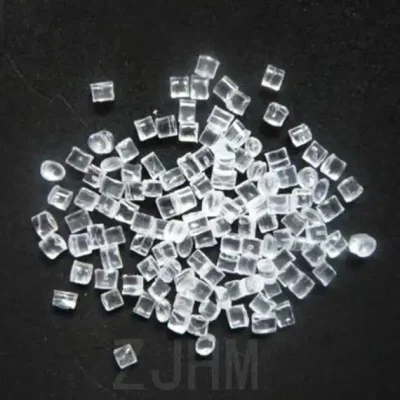-
Categories
-
Pharmaceutical Intermediates
-
Active Pharmaceutical Ingredients
-
Food Additives
- Industrial Coatings
- Agrochemicals
- Dyes and Pigments
- Surfactant
- Flavors and Fragrances
- Chemical Reagents
- Catalyst and Auxiliary
- Natural Products
- Inorganic Chemistry
-
Organic Chemistry
-
Biochemical Engineering
- Analytical Chemistry
-
Cosmetic Ingredient
- Water Treatment Chemical
-
Pharmaceutical Intermediates
Promotion
ECHEMI Mall
Wholesale
Weekly Price
Exhibition
News
-
Trade Service
In the construction process of home improvement wires and industrial circuits, grounding and zero connection are often mentioned, and many friends can't figure out the difference, and even in the process of home decoration, in order to save costs, only lay live wires and zero wires and abandon the ground wire that plays a protective role, burying hidden dangers
for the normal use of the circuit.
Below, Xiaobian will explain the difference between
wire and cable grounding and zeroing.
Protective grounding is to make a good metal connection between the normal uncharged metal part of electrical equipment and the grounding body to protect human safety
.
If the electrical equipment is not equipped with protective grounding, when the insulation of the electrical equipment is damaged, the parts that should not be charged may be electrified, which is easy to cause electric shock accidents
.
After connecting the protective grounding device, when the human body touches the live part, because the human body resistance is about 1000Ω, and the grounding resistance is generally only below 10Ω, after the two are connected in parallel, the current flowing through the human body is almost zero, so as to avoid the occurrence
of electric shock accidents.
In industrial circuits, protective grounding is suitable for three-phase four-wire systems
where the neutral point is not grounded.
Protection zero connection refers to the connection of the normal uncharged metal part of electrical equipment with the neutral line in the system in the industrial circuit to avoid the risk
of electric shock to the human body.
Electrical equipment with protection connection, when the insulation is damaged and the shell is charged, the short-circuit current forms a path through the neutral line, so that the protection equipment acts quickly and reliably and disconnects the faulty equipment
.
In practice, the protection of zero has more advantages than
grounding.
When a ground short circuit occurs, it is fast to cut off the power supply, because the short-circuit impedance between the phase line and the neutral line is small, the short-circuit current is large, and the protection device is sensitive
.
The protection zero connection is suitable for low-voltage three-phase four-wire systems
with neutral point grounding.
The majority of consumers need to pay attention to the decoration or industrial circuit, must choose to purchase wires and cables that meet national standards, and design and construction by professional power engineers, can not in order to save costs, blindly change the line design, to ensure everyone's electricity safety
.
In the construction process of home improvement wires and industrial circuits, grounding and zero connection are often mentioned, and many friends can't figure out the difference, and even in the process of home decoration, in order to save costs, only lay live wires and zero wires and abandon the ground wire that plays a protective role, burying hidden dangers
for the normal use of the circuit.
Below, Xiaobian will explain the difference between
wire and cable grounding and zeroing.
Protective grounding is to make a good metal connection between the normal uncharged metal part of electrical equipment and the grounding body to protect human safety
.
If the electrical equipment is not equipped with protective grounding, when the insulation of the electrical equipment is damaged, the parts that should not be charged may be electrified, which is easy to cause electric shock accidents
.
After connecting the protective grounding device, when the human body touches the live part, because the human body resistance is about 1000Ω, and the grounding resistance is generally only below 10Ω, after the two are connected in parallel, the current flowing through the human body is almost zero, so as to avoid the occurrence
of electric shock accidents.
In industrial circuits, protective grounding is suitable for three-phase four-wire systems
where the neutral point is not grounded.
Protection zero connection refers to the connection of the normal uncharged metal part of electrical equipment with the neutral line in the system in the industrial circuit to avoid the risk
of electric shock to the human body.
Electrical equipment with protection connection, when the insulation is damaged and the shell is charged, the short-circuit current forms a path through the neutral line, so that the protection equipment acts quickly and reliably and disconnects the faulty equipment
.
In practice, the protection of zero has more advantages than
grounding.
When a ground short circuit occurs, it is fast to cut off the power supply, because the short-circuit impedance between the phase line and the neutral line is small, the short-circuit current is large, and the protection device is sensitive
.
The protection zero connection is suitable for low-voltage three-phase four-wire systems
with neutral point grounding.
The majority of consumers need to pay attention to the decoration or industrial circuit, must choose to purchase wires and cables that meet national standards, and design and construction by professional power engineers, can not in order to save costs, blindly change the line design, to ensure everyone's electricity safety
.







